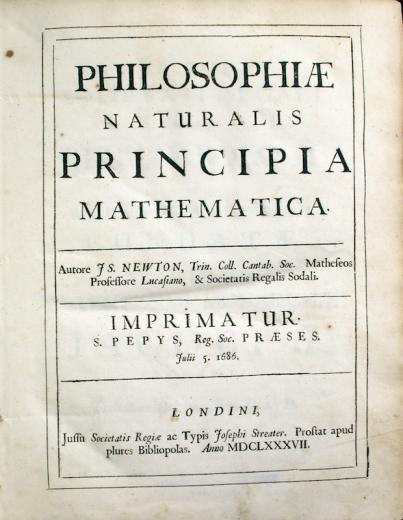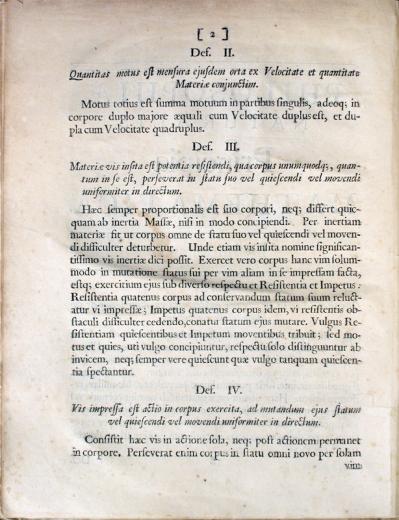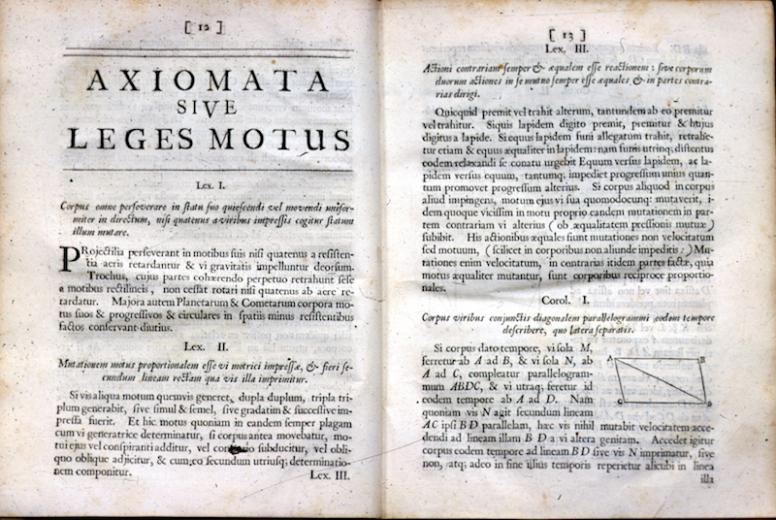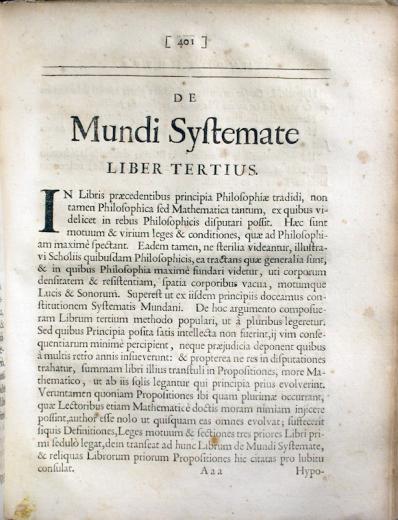Citation
Item Location
The Copernican idea that the Earth moves as a planet required a thorough revision of physics. Galileo undertook this task in his Discourse on Two New Sciences, published 80 years after Copernicus. With a mathematical description of the law of universal gravitation, Newton in this book unified the terrestrial physics of Galileo with the celestial mechanics of Kepler’s laws. The development of science from Copernicus to Newton then became recognized as a “Scientific Revolution,” a complete overthrow of Aristotelian physics and cosmology. Newton’s title in the Mathematical Principles of Natural Philosophy (1687) is a deliberate rejection of Descartes’ approach to scientific explanation in the Principles of Philosophy (1644). Whereas Descartes engaged all of philosophy, deducing cosmology from first principles of ontology and epistemology, Newton claimed only to address “Natural” philosophy. And whereas Descartes’ “Principles” were mechanical causes, even hypothetical ones, Newton argued that “Mathematical” laws suffice for science, since they are certain, even if they are only descriptive rather than causal.
Related Items
Resource Type: Book












